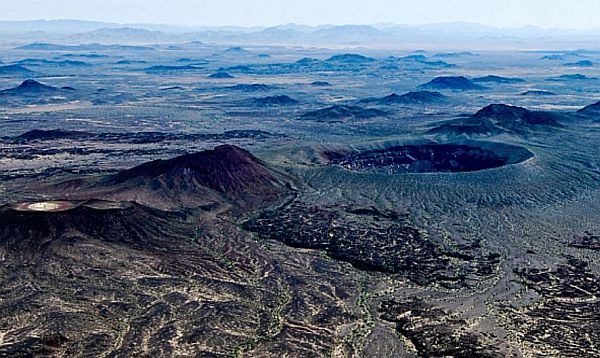Phnom Penh, Cambodia - The extraordinary landscape of El Pinacate and Gran Desierto de Altar Biosphere Reserve in Mexico with its sweeping dunes, huge volcanic craters, and rich cultural heritage is the latest site to achieve World Heritage Status.
The decision was made last Friday by the 37th session of the UNESCO World Heritage Committee in the Cambodian capital, Phnom Penh.
"I would like to congratulate to Mexico on listing the property on the World Heritage List," Cambodian Deputy Prime Minister Sok An, chairman of the 37th WHC session, said during the plenary session.
El Pinacate and Gran Desierto de Altar Biosphere Reserve is situated in the Sonoran Desert, an ecosystem shared by Mexico and the United States, according to a press statement of the International Union for Conservation Nature (IUCN,) which is an advisory body for UNESCO on natural World Heritage Sites.
"Inscription of this spectacular site on the World Heritage List is extremely welcome recognition of its significant values and impressive local conservation efforts," said Tilman Jaeger of IUCN's delegation to the World Heritage Committee meeting.
"We hope the attention generated by such recognition will help consolidate its conservation for future generations and further increase existing ties between authorities, NGOs, scientists, and indigenous peoples in the bordering United States part of the Sonoran Desert."
Covering more than 1,766,803 acres and a large buffer zone, the reserve is a relatively undisturbed protected area comprising two very distinct landscape types. To the East is a massive, dormant volcanic shield - the Pinacate Shield, with extensive black and red lava flows, the IUCN said.
The shield features 10 enormous and almost perfectly circular Maar craters and more than 400 cinder cones.
In the west, towards the Colorado River Delta and South towards the Gulf of California, is the Gran Altar Desert, North America's largest field of active sand dunes, some of which reach 656 feet in height.
El Pinacate and Gran Desierto de Altar's variety of landscapes has led to extraordinary habitat and species diversity. Many species are found only in the Sonoran Desert or even within the protected area.
The subtropical desert ecosystem is reported to host more than 540 species of vascular plants, 44 mammals, more than 200 birds, over 40 reptiles, as well as several amphibians.
The area also has a rich archaeological history and is considered sacred by the indigenous Tohono O'odham, today living on both sides of the international border.
Mexico is the one of five exceptional natural properties added to the World Heritage List this year. The other four sites are China's Xinjiang Tianshan, Namib Sand Sea in Namibia, Tajik National Park of Tajikistan, and Mount Etna in Italy.
The World Heritage Committee is currently holding its 37th session in Phnom Penh to consider inscribing 30 new properties on the World Heritage List.
Dim Sovannarom, a spokesman for the 37th WHC session, said Friday that about 17 of the 30 candidate sites are likely to be inscribed on the list during the session.


